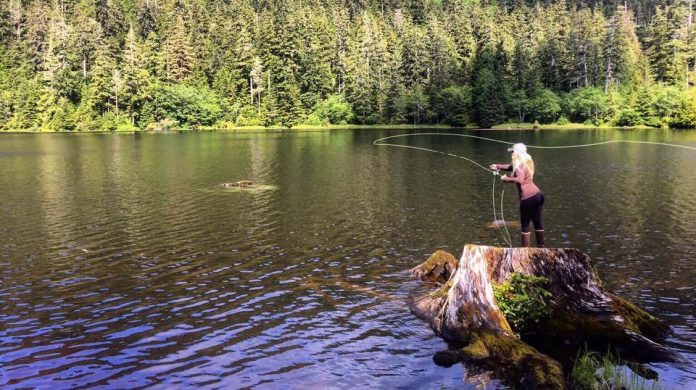I am always surprised by the number of fly-fishers who have their equipment from a former location and never touch it while living in Florida. Many are retired with plenty of free time on their hands. How close are you to a pond? It’s hard to find a body of freshwater, large or small, that isn’t teaming with fish that attack a fly, which looks like available food. Bass, panfish and occasionally snook and baby tarpon are as close as the pond in your development. If your fishing history includes freshwater trout, you have everything needed to relive your youth and enjoy the excitement of catching large numbers of fish with your long rod. This is a great opportunity to introduce kids to the outdoors. Some ponds are on private property where permission is needed, but many are public and easily accessible. The best fishing is in mornings and evenings, with more comfortable temperatures for both you and the fish. An afternoon shower will not only cool the water a little but will wash food into the pond. Duplicating forage with small ant, beetle, crickets and hoppers, especially with floating patterns, will trigger explosive strikes. When using surface offerings, after the cast, wait until the surface rings have disappeared before imparting a little twitch to the fly. Looking like a stunned insect that is recovering will entice a strike. Most fish will be around structure, trees, docks, floating plants or a dam breast. Probe all structure with careful casts. Cast close to shore. A 4- or 5-weight fly rod with a floating weight forward line, using a 7-foot leader tapered to 6-pound test, will handle most fish easily. Use flies that imitate small baitfish or use a white or yellow popper in sizes 6 to 10 and cover water quickly. If you find fish that are too small for your equipment or too large, adjust gear to be better prepared on your return visit. Be careful where you step. This is Florida.
Fly fisherman Pat Damico charters lower Tampa Bay and can be reached at captpat.com or 727-504-8649.
- Captain’s Corner:Pat Damico - June 25, 2019
- Flat water makes seeing tarpon easier - May 17, 2017
- Warm rivers holding plenty of targets for fly fishermen - February 16, 2017











